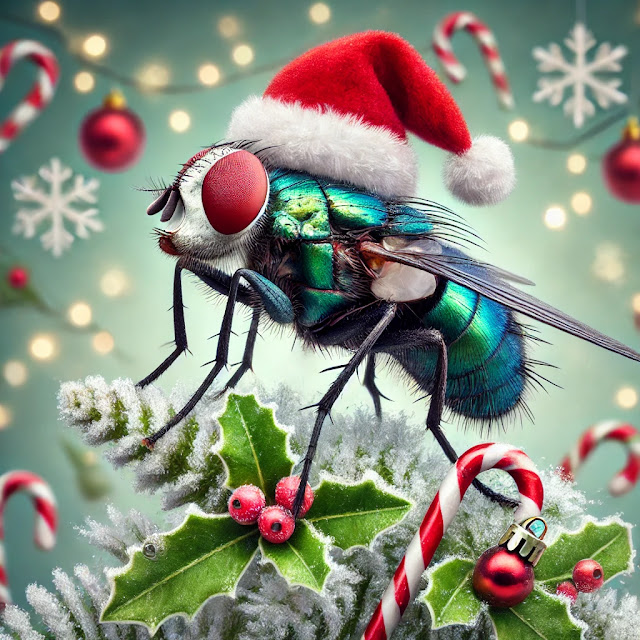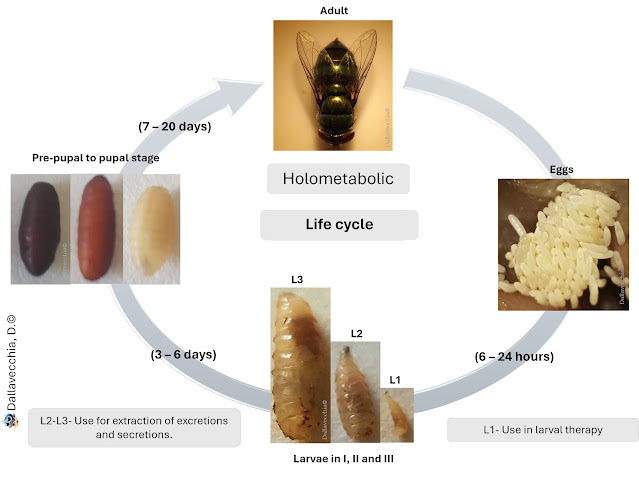Tuesday, December 24, 2024
Friday, April 12, 2024
Fly life cycle
When the larvae have been fed enough to continue their development, they look for a place far from the food source and with some depth to hide, where they are buried to begin the pupal stage. The formation of the pupa consists of the pre-pupa phase, where the shortening, hardening, and darkening of the color of the exoskeleton begins, where substances, such as chitin, will form an impermeable protective layer, preventing the loss of water to the environment.
A new fly emerges through an alternation between dilation and contraction of the ptilinum liquid in the fly's head, which ruptures the puparium, allowing the pupa to move out. The adult fly can also be called an imago.
Adults feed on a source of carbohydrates and look for protein as a substrate for their development. During the first five days after birth, females need a source of protein to develop their ovarian follicles.
Mating begins around the sixth day but may vary depending on the species.
Joyce
Laing; On the Ptilinum of the Blow-fly (Calliphora erythrocephala). J Cell Sci
1 June 1935; s2-77 (308): 497–521. doi:
https://doi.org/10.1242/jcs.s2-77.308.497
Giovanni
Benelli, Donato Romano, Looking for the right mate—What do we really know on
the courtship and mating of Lucilia sericata (Meigen)? Acta Tropica,
Volume 189, 2019, Pages 145-153, ISSN 0001-706X,
https://doi.org/10.1016/j.actatropica.2018.08.013







